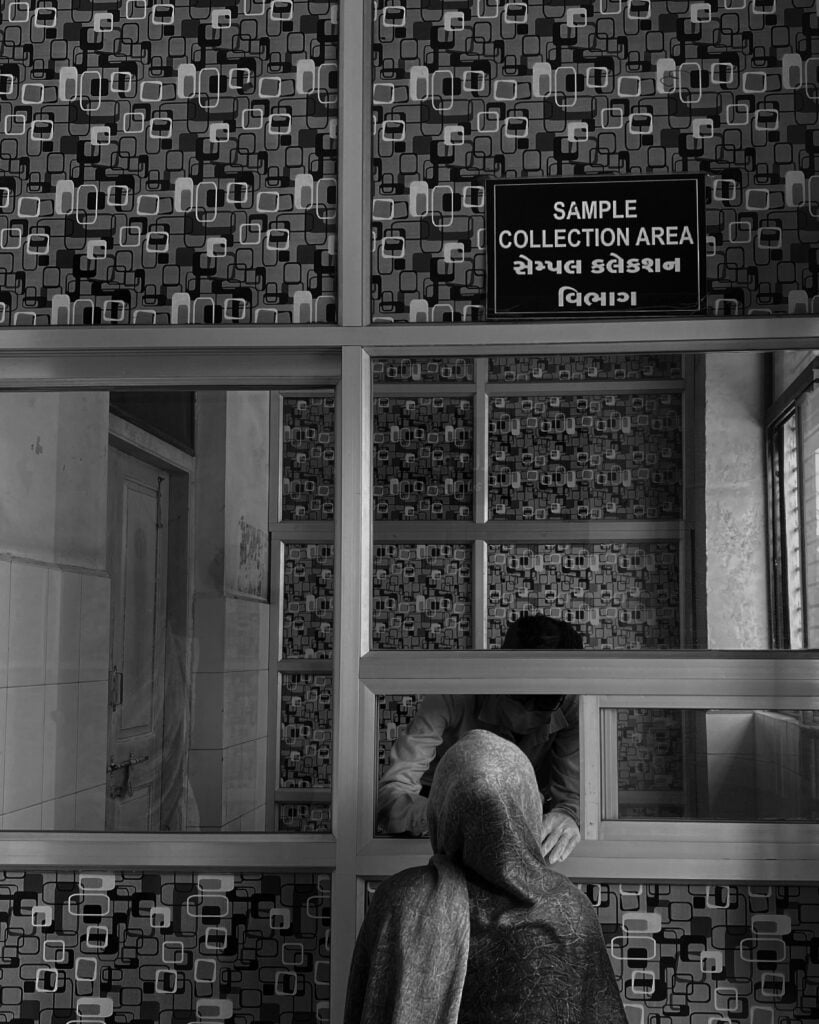The second wave of pandemic had begun to spread its claws to some of the most interior parts of the nation by the end of March 2021. With a little less than three-quarters of the country’s population clustered in some of the most interior settings of the country, the lives of plenty were at stake. At Sayla, a relatively larger village and a sub-district of Surendranagar District in the drought-prone Saurashtra region of Gujarat, there was a bifurcation of opinions. One, supporting the Katha, a religious sermon that was to take place in one of the village’s many temples and the other against it. The latter believed the Katha would act as a catalyst in the spread of COVID-19 in the region. Which side won, nobody found out.
With delays of over two weeks in the generation of RT-PCR Test Results, which were then being sent 35km away to CU Shah Hospital of Surendranagar District, the village’s helpless people continued to do to and fro rounds to the Sayla Community Health Center, run by Shree Raj Saubhag Ashram. The desperate and the destitute queued up outside the facility to get their Rapid Antigen Tests done. One could see hunchback old ladies, men, listlessly, sitting on their haunches, exhausted family members and mask-less children playing on the premises.

Also read: How COVID-19 Second Wave Devastated Rural India
Amidst a severe lack of informative sessions about the vaccine, rumours of it being a planned genocide to eliminate the poor and the elderly to avoid payment under government schemes, one could wonder about the state of what had been internationally paraded as the ‘World Largest Vaccination Drive’ in the village. Losing a day’s wage due to the side effects of the vaccine was unaffordable for many. And the horrors of being banished, fired and abandoned by organisations and vicinities after testing positive haunted those who subsisted on casual labour.
When the cases peaked in early April, the CHC had already run out of beds, people had suddenly started dying of something that was in the air, and the village’s makeshift COVID-19 care shelter was yet to come into existence.
The shelter came into being in mid-April. And within a couple of days, the rooms with two beds had already turned into rooms with four, sometimes five beds. Inside the COVID-19 shelter, things were no better. People had lost control over their bodily functions. The village’s water woes had escalated the facility’s freight which kept running out of drinking and non-drinking water. Bodily fluids flooded the outsides and insides of the toilets. Some of the older patients lay on their beds with soiled pyjamas, staring blankly into nothing, others mindlessly chanted hymns, and the rest endlessly wandered through the stranded corridors.
Outside the COVID-19 shelter, corpses heaped, people wailed, and funeral pyres filled barren lands.
The penetration of COVID-19 in villages such as Sayla had knocked the infamous Gujarat Model into a rubble of lost lives, poor healthcare and a system’s madness.
As COVID-19 cases continued to hit new spikes every day, and the State continued to be at war with the Judiciary about the number of cases, the penetration of COVID-19 in Gujarat had already knocked the infamous Gujarat Model into a rubble of lost lives, poor healthcare and a system’s madness. Incessant attempts to distort the stats, crow about the little done, stay hush about the undone was a classic tactic to save a purported leader and his many minions.
Also read: Medicine Was Never Apolitical Or Equitable: Lessons From India’s Grim COVID-19 Second Wave
Generations continued to get wiped out in rural India in the harrowing second wave of the pandemic. With some of the communities even deprived of their right to know their family member’s reason for death, the situation on the ground was dire. There was a paucity of oxygen cylinders, beds, medication and healthcare facilities walloped the poor as they struggled to get their loved ones admitted to the COVID-19 shelter. Meanwhile, the wails of those who had lost their loved ones filled forlorn village homes, frantic noises of wheeling medicine trolleys filled the COVID-19 shelter and rallies, and sinners filled the country.
Meanwhile, the wails of those who had lost their loved ones filled forlorn village homes, frantic noises of wheeling medicine trolleys filled the COVID-19 shelter and rallies, and sinners filled the country.
A poor man’s vantage point could have only been encapsulated by George Orwell’s famous lines from Animal Farm, “The creatures outside looked from pig to man and from man to pig, and from pig to man again; but it was already impossible to say which was which.”
Swastika earned her Bachelor of Arts in Economics and Mathematics from Jesus & Mary College, University of Delhi. Her interest areas are Development Economics, Rural Management, and Cognitive Sciences. When not on the field, Swastika is capturing everyday rural life and curating photo journals. An ardent lover of flavoured tea, find her on swings with a book in one hand and tea in another! You can find her on LinkedIn, Instagram and Twitter.




